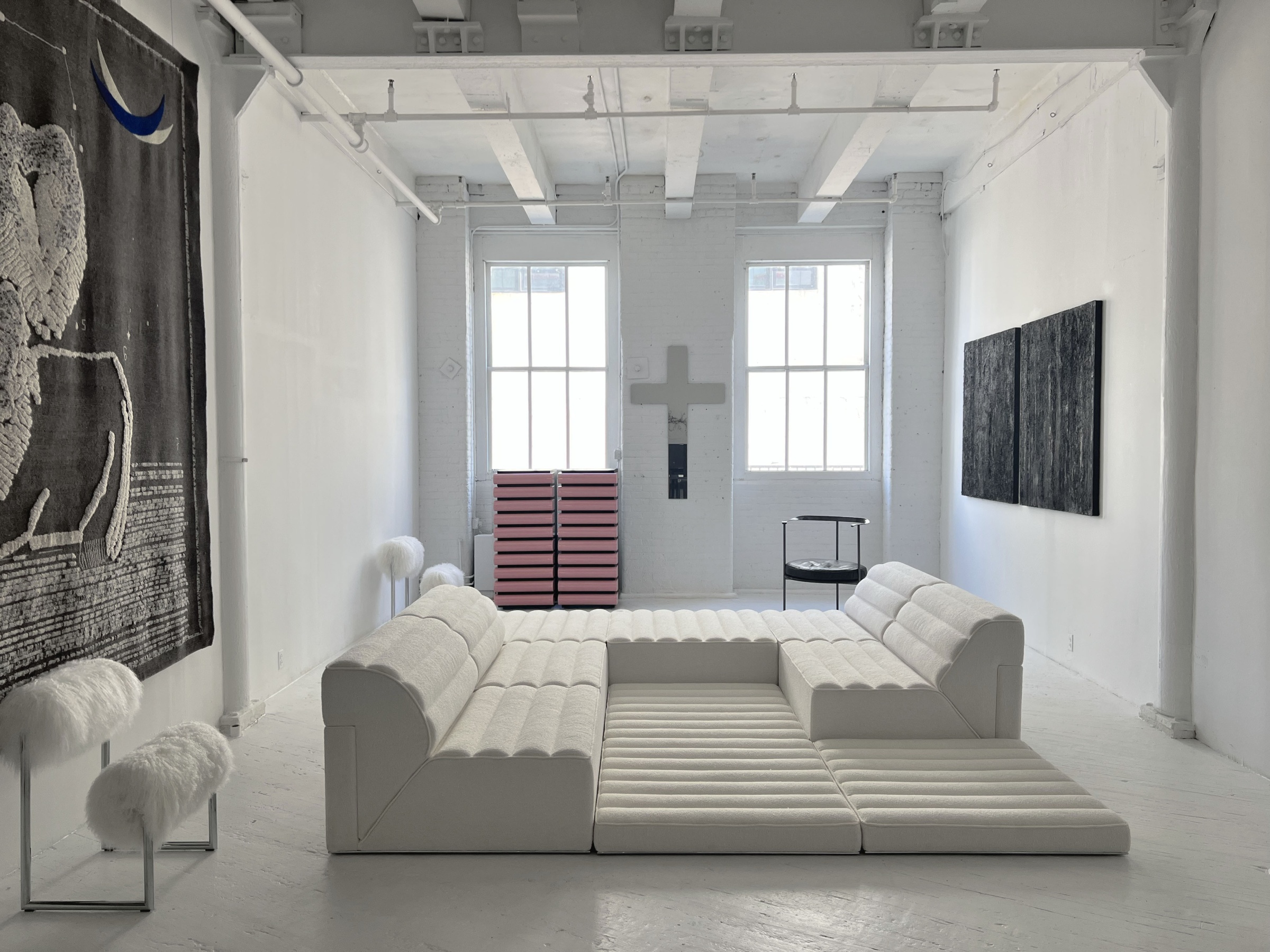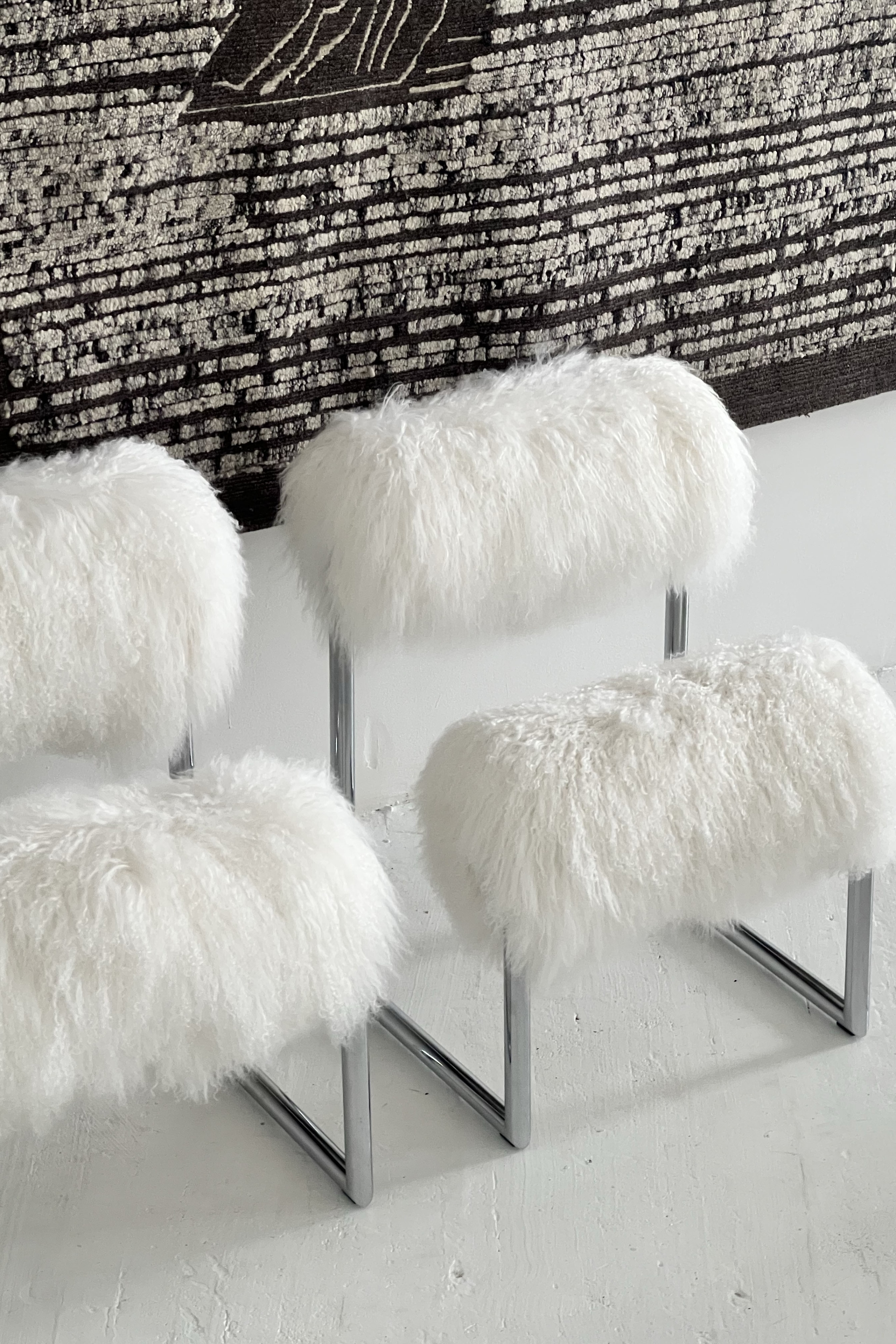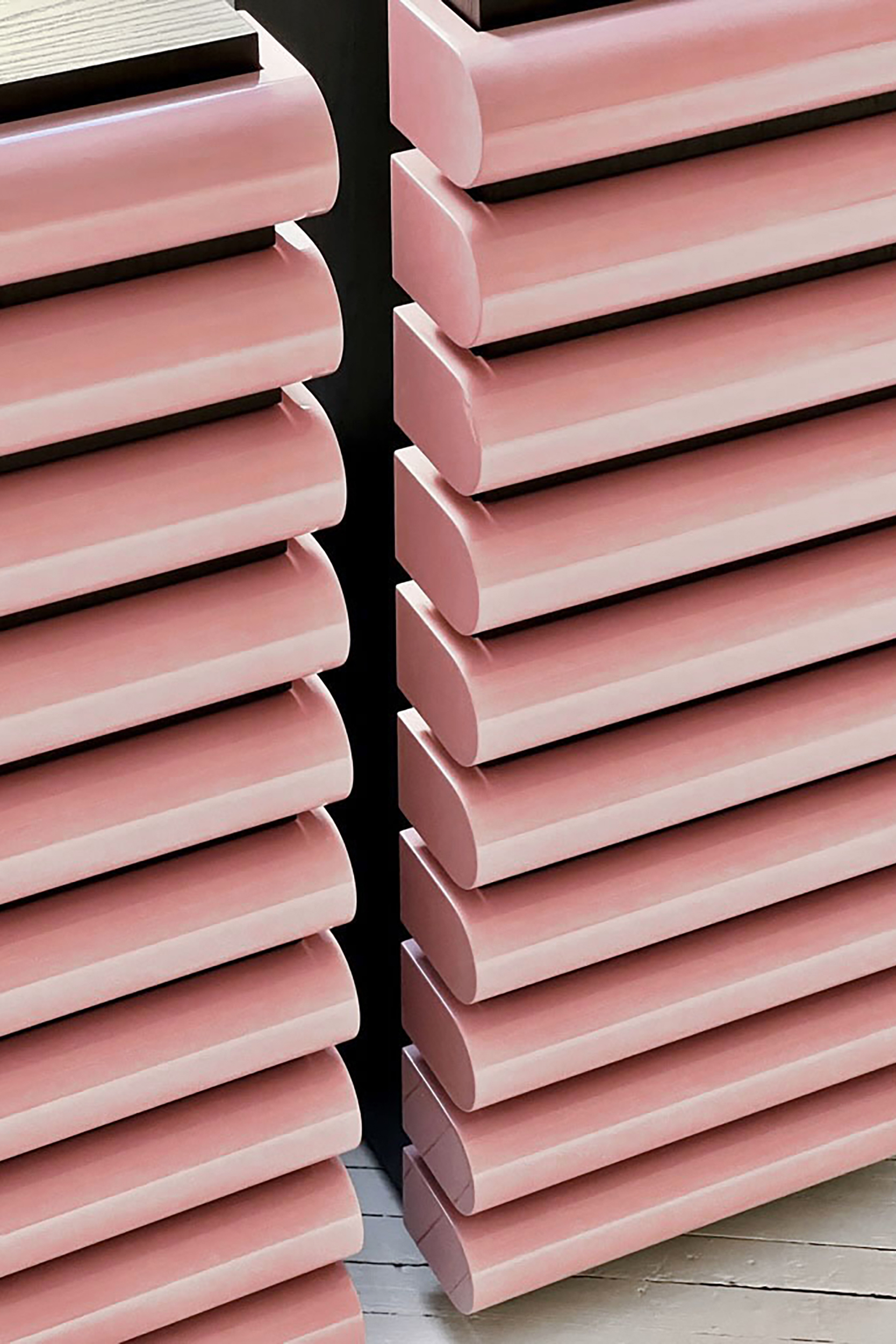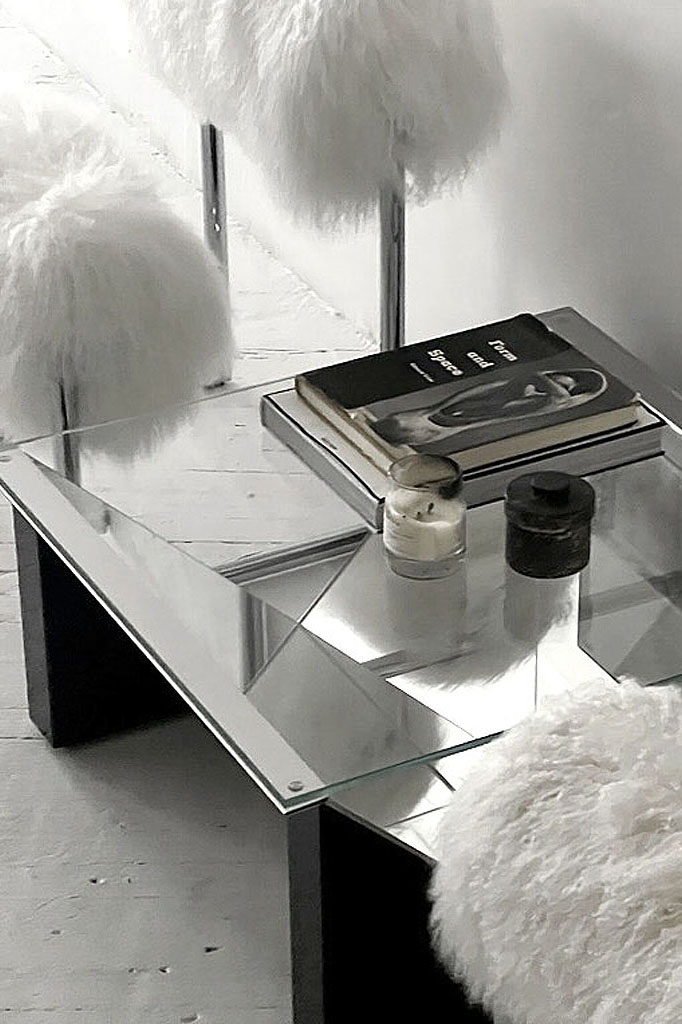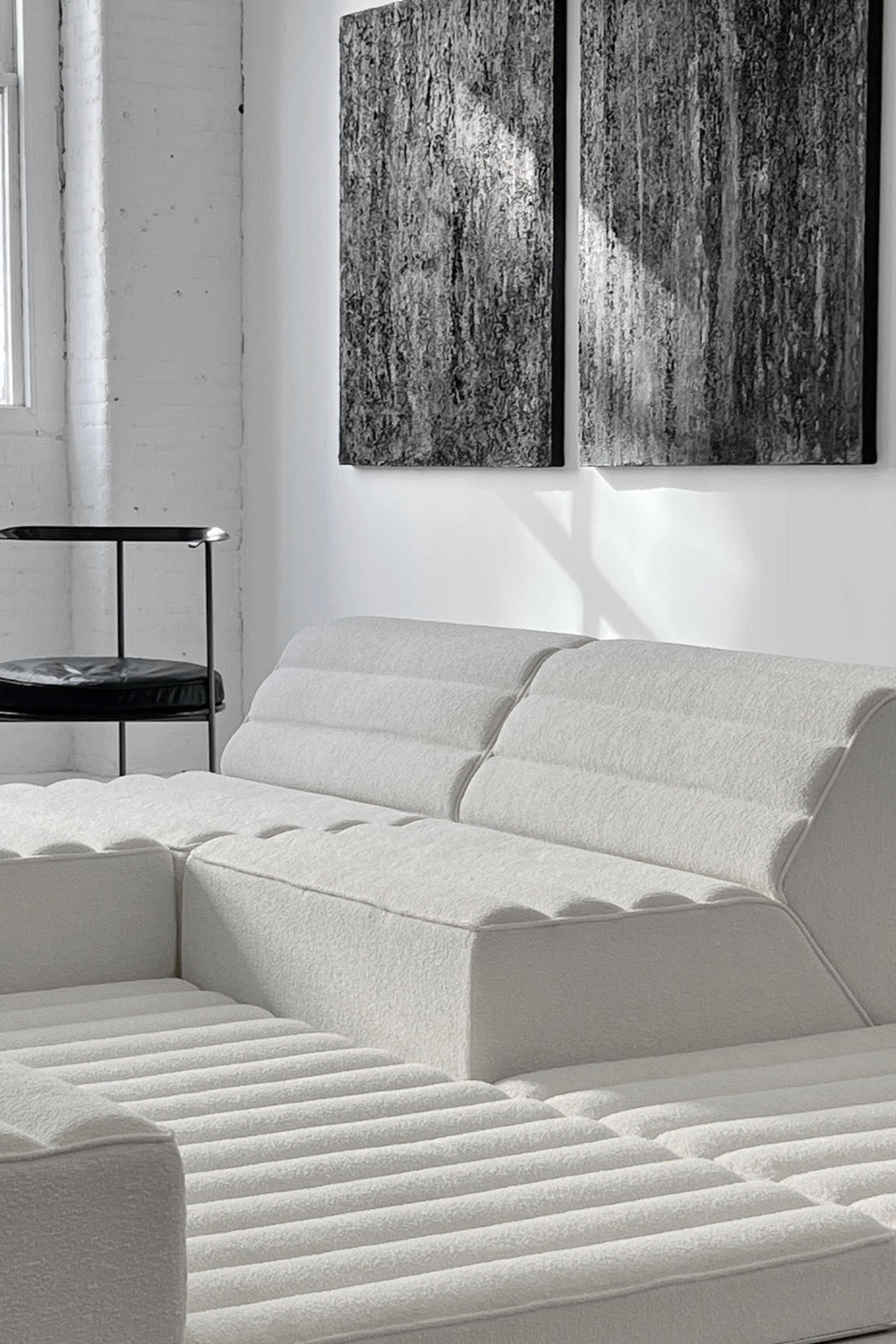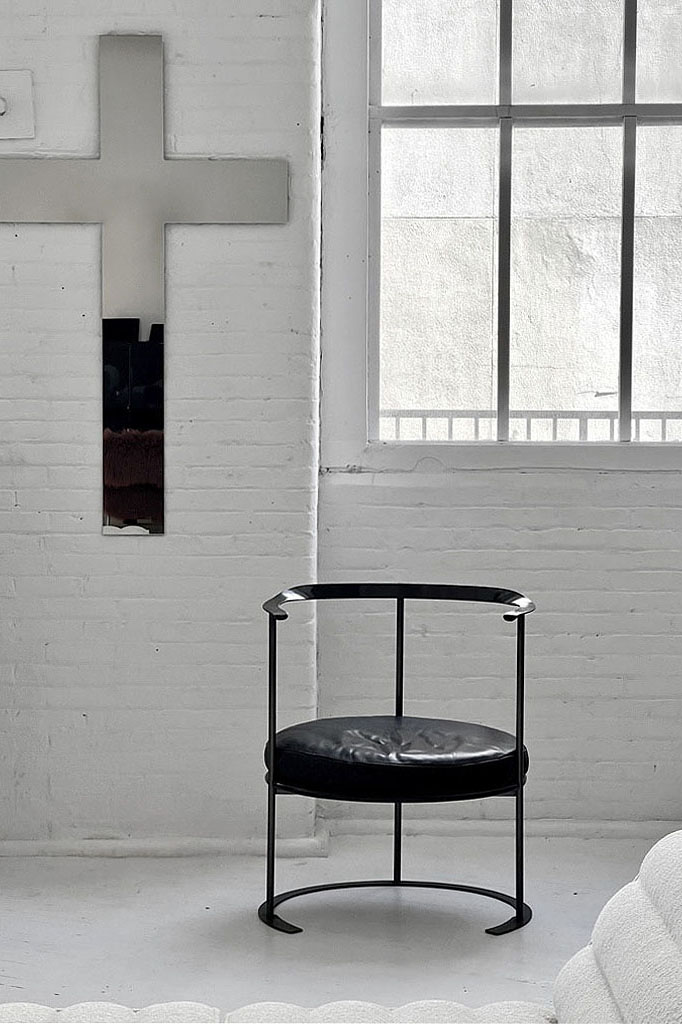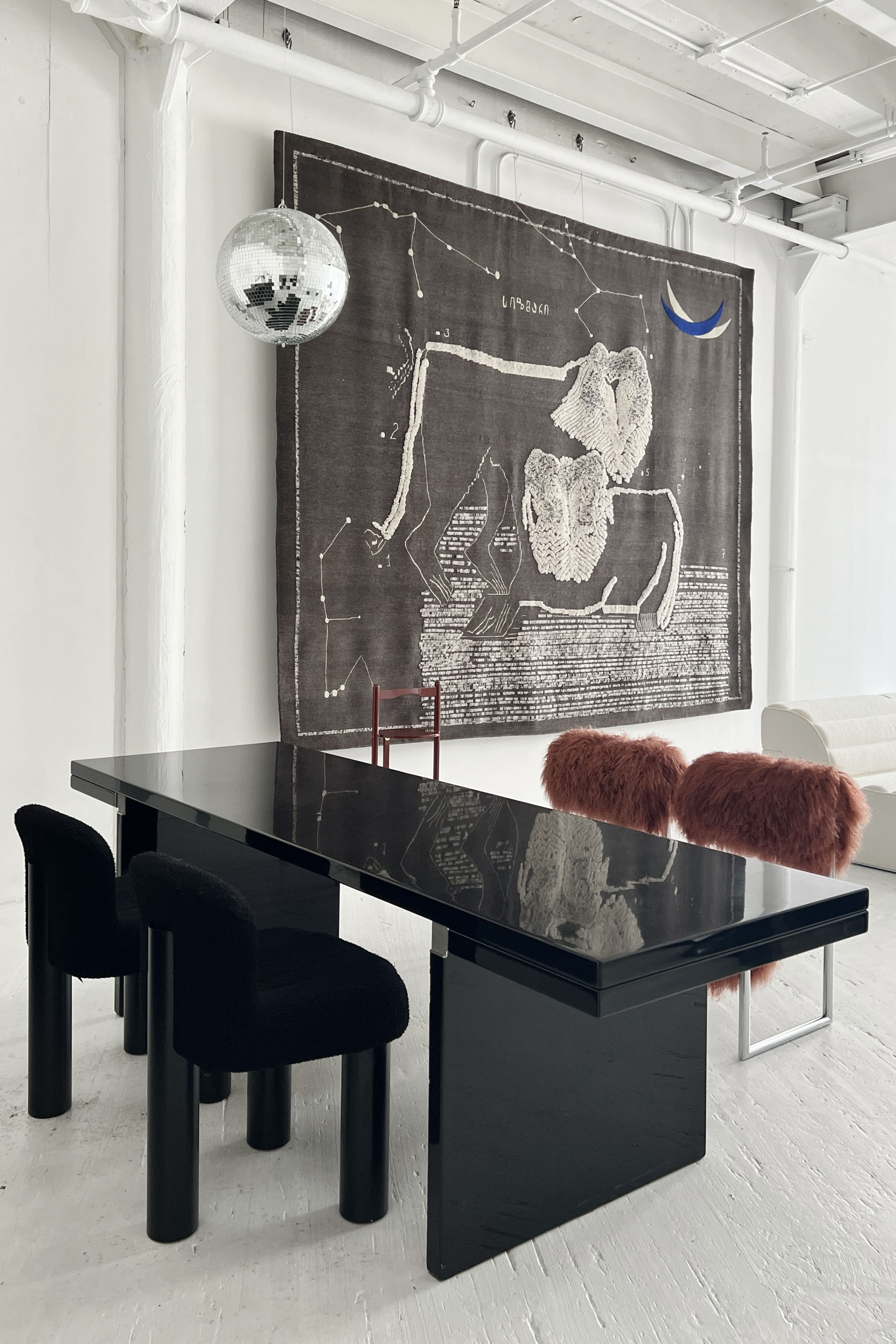Inside a nondescript industrial loft in Brooklyn, a heavenly array of Italian design awaits American buyers. Duplex, founded by macroeconomist-turned-curator Patrizio Chiarparini in 2015, is a boutique gallery specializing in Italian design, both esteemed and yet undiscovered.
Though Patrizio has a keen eye for pieces that embody both surrealism and timelessness, his curatorial decisions stem mostly from his upbringing in Italy. The architects and designers he most admired, like Carlo Scarpa, didn’t seem to have the same traction in the states, so he began cataloging, collecting, and selling their works in 2015. An online marketplace soon grew into a physical showroom.
In Duplex’s latest show, Utopia, Patrizio revisits Italy circa 1970, when the country was pushing back against a re-emergence of fascist rule and dreaming of a better future. The featured designers, Vico Magistretti, Claudio Salocchi, and Nanda Vigo, emphasized playful, avant-garde ideals that resisted the brutish assimilation and uniformity of fascism. Each piece in the exhibition is part of the Acerbis Remasters series, which reproduces historical designs from their archives in new versions and finishes.
In a conversation with Sixtysix Patrizio explains the similarities between the ’70s and modern politics but questions if contemporary designers are more complacent and less idealistic than their historical counterparts.
- Due Più by Nanda Vigo drapes a simple steel frame in Mongolian fur.
- Storet, a chest of drawers designed by Nanda Vigo
What is your background in curating?
Patrizio Chiarparini: I don’t necessarily have a background in curating. It’s just life experience. I grew up in an area with a Carlo Scarpa work, so I had a certain sensibility just because I was exposed to things like that. Duplex started in 2015, and the idea was giving exposure to pieces, brands, and stories that did not have much exposure. Because of my background and my culture, the particular things that I love just happened to be a little bit off the beaten path.
How do you come across these Italian brands? Are you based in the United States, or do you travel between the US and Italy?
I’m a New Yorker, but I travel extensively and I’ve been doing that for decades. In Italy, I work with different design companies, so I’m exposed to them and aware of what’s happening and what has happened in the past.
What gave you the idea for Utopia?
I’m particularly interested in that period of Italy post-war. This exhibition is really a celebration of that mood, of that spirit. It is freshness; it is without boundaries.
I think any product, person, or object in general reflects the mood of a society at a certain time. I have this myth of that era, that it was quite light, full of change, and extremely difficult, especially in Italy. Social change meant terrorism, and that went on for the full decade of the ’70s. For example, they kidnapped and killed the Italian Prime Minister. It was a difficult time.
However, out of this turmoil, there was beautiful hope for a better future, that you could make a difference, and I love that spirit. So that’s what I’m trying to celebrate. I called it “Utopia,” because it refers to the idea of creating something better for the future, and the strong feeling that you could do so.
- Napoleone coffee table, also by Claudio Salocchi, is multifaceted with its V-shaped mirrors
- The Free System by Claudio Salocchi can be infinitely rearranged.
Do you see parallels between the spirit of postwar Italy and now?
Technology dramatically changed pretty much every aspect of life, and that kind of hope for a better future is just not there anymore. The culture is more about being worried about something.
These pieces of furniture being created in postwar Italy were about the need to externalize a feeling that people had, that you needed to change, and it was right to do so. That’s not felt as a need anymore, because everyone is kind of jaded.
Another point is this incredible, fantastic, democratization of culture. You can read and study anything online, but at the same time, it’s made culture very fragmented and very fast-paced. And just because culture is available does not mean that people actually study it, so I think a big problem in new pieces being made is that they come from a non-culture status. Things are a bit of a stencil right now, because there’s not much knowledge on what has been done in the past.
That’s so insightful. I wanted to focus on Acerbis, which produces all the pieces in Utopia. How did you come across this brand and what is their Remasters Collection?
Acerbis is a brand that has always been of interest to me because it created these fantastic products in the late ’60s and early ’70s that were part of that Italian design revolution.
They’ve reintroduced three pieces, which we’re showing here. The Free System by Claudio Salocchi is a modular sofa system that is very playful. I love it because you can reconfigure it as you wish. It’s a piece that was in production just for a short period of time. Because this is a piece that has never really been seen, funnily enough, it is quite new even though it was probably designed in ’71 or ’72.
Also by Claudio Salocchi, there’s a coffee table called Napoleone, which I like because it has this V-shaped mirror inside. It is multifaceted.
“These pieces of furniture were about the feeling that you needed to change, and it was right to do so.”
Who else is in the show?
The other big contribution is Nanda Vigo. These pieces were originally manufactured by another company. The chairs are called Due Più.
Nanda Vigo was a big name in Italian design. She worked with Piero Manzoni, for example, who created Merda d’artista, which was artist excrement in tin cans, and that was super, super extreme. I love that kind of thinking.
One of the buildings that I was most fascinated with when I was younger was the Casa del Fascio by Giuseppe Terragni, which is this super rationalist building designed in 1936 in Como. By reading through interviews, I found that Nanda was totally obsessed with the way that the light hit this particular building. You can actually see the way she interprets light in her work and it’s quite interesting.
- Catilina Lounge, designed by Luigi Caccia Dominioni in 1958 for Azucena.
- Across from the Due Più chairs is a set of Cini Boeri’s Botolo Casentino arm chairs. Behind hangs the “Lions at Night” rug by Rooms Studio.
Are the pieces in this show new editions, or are they vintage?
These are historical pieces in current production.
I’m also drawn to that crucifix mirror. Do you place that for the show, or is it always there?
Yeah, it’s an interpretation. How can you talk about Utopia without talking about religion?
Very Italian. Very Catholic. How do you feel about putting this Postwar work in a New York style loft?
I think it’s a no-brainer. When I think of a Soho loft, I think of Christopher Wool. If you look at the Duplex logo, it’s clearly inspired by him. I’m talking about the ’80s. It was a bit of a movement, no?
So wrapping up, how receptive have visitors been to Duplex and your curation of Italian design?
I think everybody and anybody that comes here are genuinely excited about the space that we have created. At the end of the day, most of our business is online, but the space is a way for Duplex to fully express itself.
